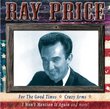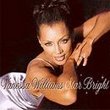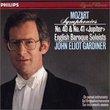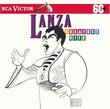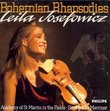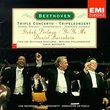| All Artists: Jean Sibelius, Sir John Barbirolli, Royal Philharmonic Orchestra Title: Sibelius: Symphony No. 2 Members Wishing: 1 Total Copies: 0 Label: Chesky Records Release Date: 3/29/1990 Genre: Classical Styles: Historical Periods, Modern, 20th, & 21st Century, Romantic (c.1820-1910), Symphonies Number of Discs: 1 SwapaCD Credits: 1 UPC: 090368100320 |
Search - Jean Sibelius, Sir John Barbirolli, Royal Philharmonic Orchestra :: Sibelius: Symphony No. 2
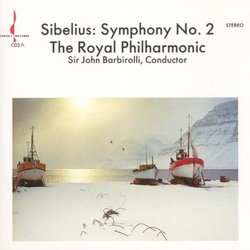 | Jean Sibelius, Sir John Barbirolli, Royal Philharmonic Orchestra Sibelius: Symphony No. 2 Genre: Classical
The Second is Sibelius's most popular symphony, thanks to its surging melodies and glowing orchestration, and also because it calls for the absolute, standard Romantic orchestra with no "extras," making it economical to... more » |
Larger Image |
CD DetailsSynopsis
Amazon.com The Second is Sibelius's most popular symphony, thanks to its surging melodies and glowing orchestration, and also because it calls for the absolute, standard Romantic orchestra with no "extras," making it economical to perform. But it's by no means easy. The finale, in particular, often seems to come around one time too many when the conductor fails to keep the music moving smartly along. John Barbirolli made a specialty of this symphony, and clearly he solved all of its interpretive problems. He just plays the music as excitingly as possible, all the way through, and the result blazes forth from your speakers like a comet flashing across the night sky. --David Hurwitz Similarly Requested CDs
|
CD ReviewsPassion and Nobility Hung T. N. Tony | Hong Kong | 03/07/2001 (5 out of 5 stars) "Sir John Barbirolli (along with Jascha Horenstein) was perhaps the most unjustly neglected of the great conductors of the 20th century. For years he recorded with the Halle Orchestra for a small label (which, in spite of the poor sound and flawed playing, yielded several gems, including Vaughan Williams' London Symphony, Elgar's First, Dvorak's Eighth, etc.). It was not until the last decade of his life (1960-70) that the major companies finally gave him the chance he deserved to record the major repertoire with top orchestras. Even then, his EMI recording of Beethoven's Eroica Symphony (one of the greatest ever) had to languish for decades in oblivion until rescued and reissued by the Barbirolli Society and Dutton. And this recording of the Sibelius Second with the Royal Philharmonic was (believe it or not) original made for the Reader's Digest, and available for years only in a boxed set by mail order. It was thanks to an enterprising company like Chesky that this treasurable performance was made available to the general public.And what a performance! The best tribute one can pay to it is that, no matter how many times you have heard this symphony, and from however many other conductors, Barbirolli lets you hear it as if for the first time, and makes you fall in love with it all over again. Like any other great Barbirolli performance, it is deeply imbued with passion and nobility (no wonder he was the ideal interpreter of Elgar, whose music has nobility ('nobilmente') as its very soul). Witness the noble, grandly spacious climax of the first movement (which makes every other performance seem so ordinary), the deeply expressive and moving slow movement, the exciting third and the triumphantly uplifting finale, sweeping all before it like a tidal wave, and the final peroration is too glorious for words. But the finale is no loud, blustering hymn of victory -- the wistful, dirge-like interlude just before the recapitulation has never been played more touchingly. I read somewhere that this performance was recorded only a few days after the death of Barbirolli's own mother. Perhaps this was a moment that reminded him of his loss. Whatever it was, you will never hear a preformance of Sibelius Second that is so full of warmth and humanity, that sees so deeply into the life of things." The Best Recording of Sibelius' Second Symphony Available Hung T. N. Tony | 04/18/2003 (5 out of 5 stars) "Sibelius' Second Symphony is a personal favorite. I have recordings produced by Davis, Vanska, Bernstein, Beecham, Szell, Maazel, Van Karajan, Jarvi, Berglund, Jansons and Ormandy -- nothing else compares to this superb rendition. Relegated for most of his lifetime to a regional orchestra (The Halle) Barbirolli extracts from the magnificent Royal Philharmonic a performance of classic proportion. This recording is one of the finest in the entirety of the catalogue. The sound engineering provided by Chesky Brothers is absolutely superb. If you love great music, great interpretation, great sound and a great performance grab this CD quickly. It is a classic." SEASONED SIBELIUS Melvyn M. Sobel | Freeport (Long Island), New York | 01/14/2003 (4 out of 5 stars) "Sir John's understanding of Sibelius is complete, his grip on the composer's intentions undeniable. The music is brought to pristine clarity, with hidden melodic lines boldly forward and thematic unity urgently struck. The balance between grandeur, solemnity and emotional weight are perfectly judged.
Thus, the opening Allegretto masterfully builds to that most beautiful of climaxes--- the exact kind that sends empathetic shivers of joy down the spine!--- and then recedes in the faintest nostalgia. The Andante retains a unique blend of "misterioso" elements inevitably enmeshed with Sibelian romanticism and nationalist fervor. With the utmost command of the score, Barbirolli delves into the Finnish heart as no other. With the final movements, Vivacissimo and Allegro Moderato, the real tour de force unfolds with sweeping majesty. The transitions within this combined finale are breathtaking: the brass ring out, the strings are full and potently effective. The threads that hold the symphony together are boldly bristling with a compelling unanimity that simply stuns. Recorded in 1962, under the auspices of Engineer Ken Wilkinson and Producer Charles Gerhardt, Sir John's performance with The Royal Philharmonic is a timeless treasure of immense emotional impact. We owe a debt of gratitude to Chesky Records for committing such a masterwork to CD. [Running time: 43:54]" |

 Track Listings (3) - Disc #1
Track Listings (3) - Disc #1